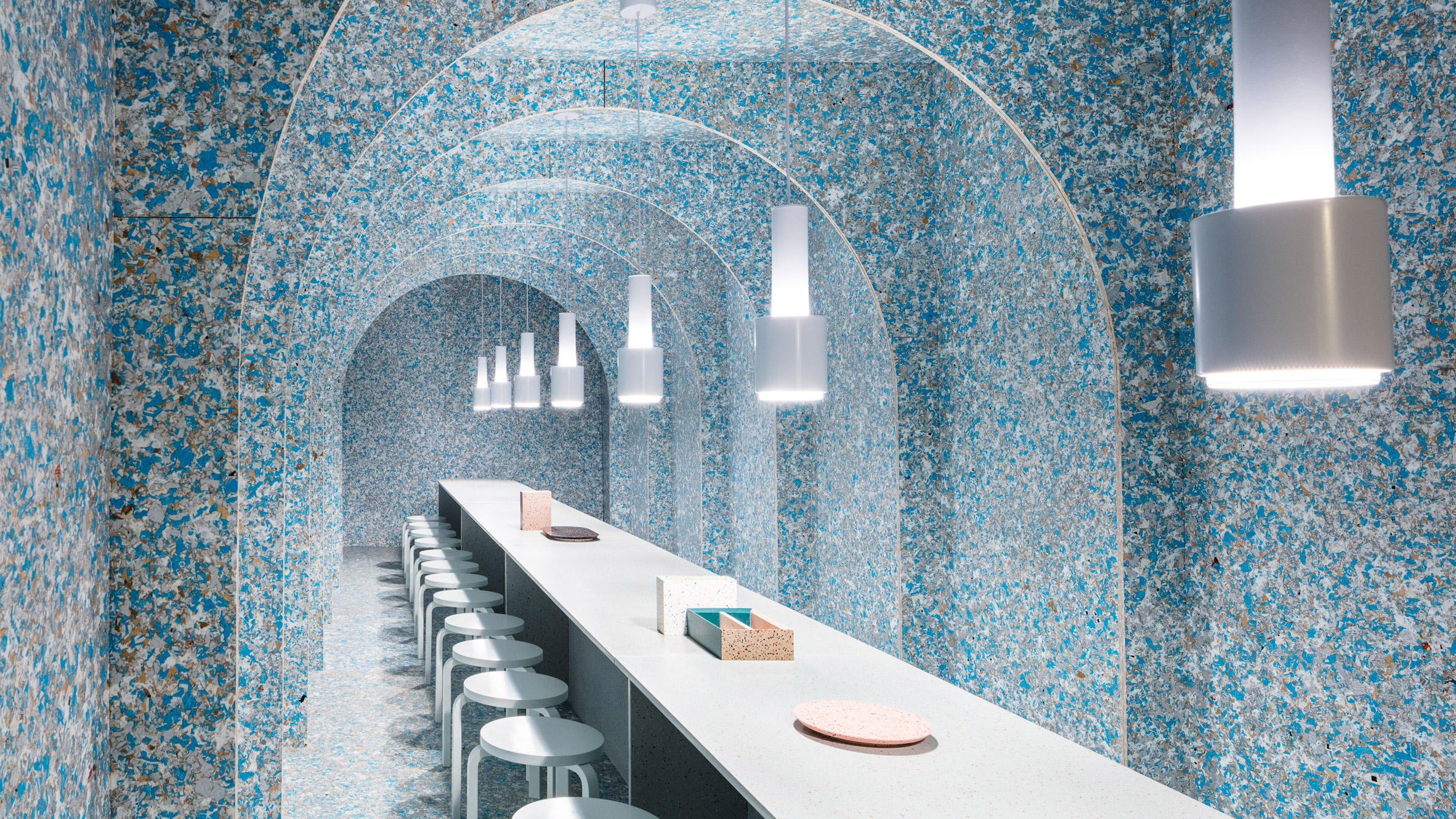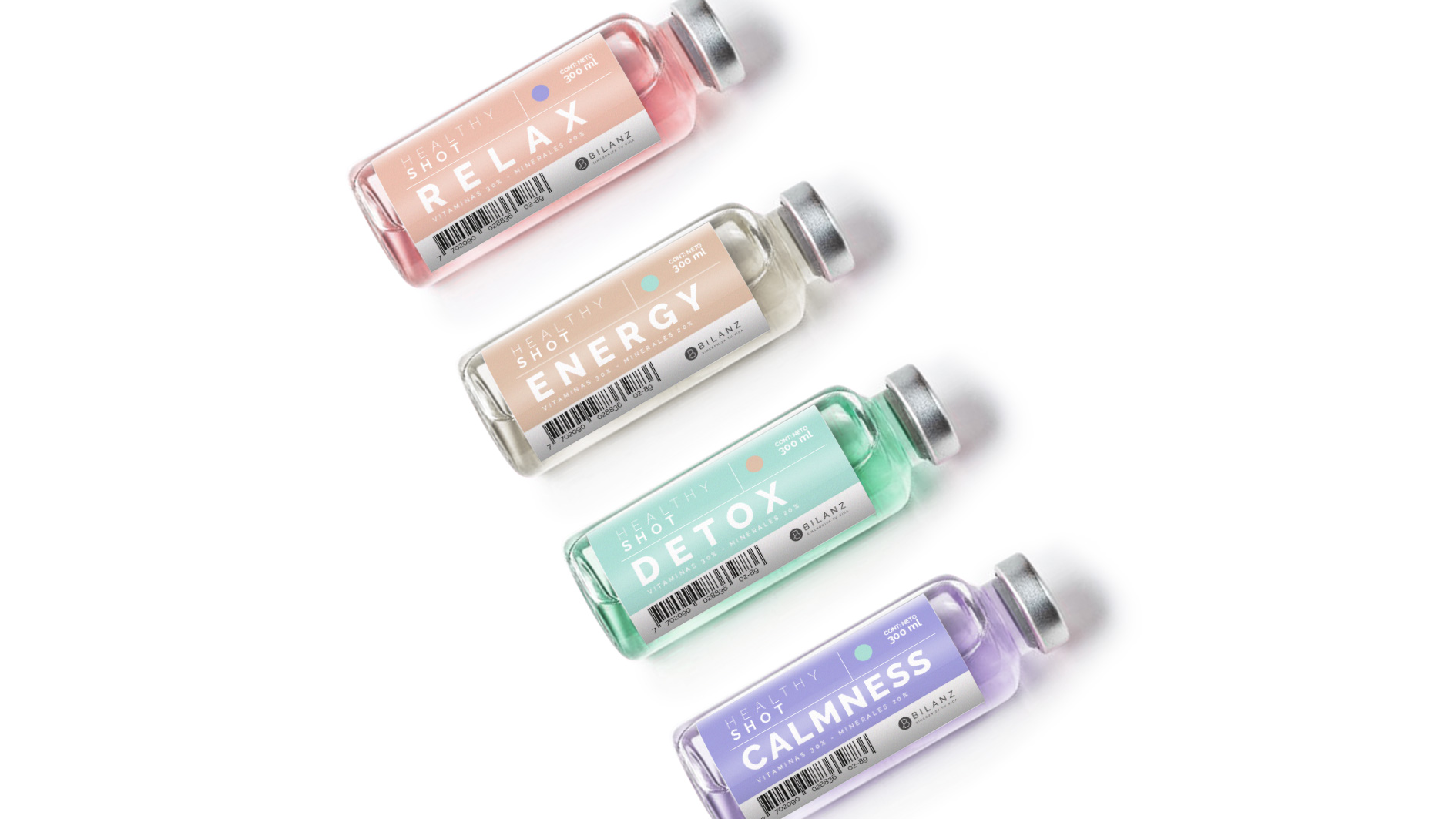Ethical and purposeful consumption
An example of conscious design: the Zero Waste Bistro debuted last year inside WantedDesign Manhattan during New York Design Week. It was conceived as a pop-up restaurant model constructed in recycled packaging, and its kitchen composts organic leftovers. Photo by Nicholas Calcott.
LEE ESTE POST EN SU IDIOMA ORIGINAL, ESPAÑOL.
Translated from Spanish.
ImasD is a design and strategy studio based in Medellin, Colombia, which is recognized for its work with brands that adapt to change. Today we continue our collaboration with the Colombian design studio, featuring a series of posts on topics related to design trends, branding, and Latin American identity.
The second part in the series is written by Camila Arango, Design Researcher at ImasD. Camila is a Product Design Engineer, and is passionate about environmental issues and ethical design. Currently she leads the studio’s special projects, and has hosted talks and workshops for national and international clients. You’ll find that she has an informed viewpoint regarding ethical and conscious consumption. grupoimasd.com
“with conscious brands, the benefits, ingredients and experience speak for themselves.”
“The ‘Better for you’ trend concerns social, cultural and economic issues, and people are willing to pay the cost of the products, for the well-being they offer and the benefits they provide to the body, mind and spirit.”
In our changing consumerist environment, there is a clear trend to “be better,” both with ourselves and with others. But we constantly face an internal struggle between what we would like to consume and what we "should" consume to achieve that expected well-being. Because of learned behaviors, it is difficult to achieve a more conscious, sustainable, transparent and ethical mode of consumption. These behaviors are based on immediate gratification and the addiction to pleasure that this generates.
What happens when all our learned behaviors keep us from being conscious and responsible consumers?
Despite these obstacles, a growing awareness by consumers has created a shift in the environment, starting with the brands themselves. Design products and services are evolving to respond to consumers’ current needs, and these changes are based on a shift in the mentality and lifestyle of their users. This is where we find the ‘Better for you’ trend, which calls for a simplification of all points of contact. It heralds a social, cultural and economic shift, where people are willing to pay a higher cost for the products in exchange for the well-being and benefits they offer to the body, mind and spirit.
As a result, many newer brands are conceived with an inherent, ethical purpose, and are designed for consumers who grant importance to everything they consume. These brands are often designed to contribute to overall well-being, taking advantage of the healing properties of each ingredient without sacrificing quality, crafting experiences that motivate consumers to take care of their body and mind, and above all, incorporating conscious habits into their lifestyle.
In Colombia, brands such as Bilanz arise as a result of these needs, and are responsible for delivering well-being from the inside out through a comprehensive and conscious proposal. The identity and communication of the brand play an important role in transmitting its essence, balance and vitality, and this is manifested in colors, spaces, products and accessories that suggest calm, confidence and expertise. It is in this way that a conscious brand begins to be consistent in all its points of contact.
Conscious brands are the result of understanding products and services as something that goes beyond sales; it's the benefits, ingredients and customer experience that speak for the brand. These factors give these brands the added value of constant well-being.
Another example of conscious design is the Zero Waste Tucurinca a chair completely woven from synthetic recycled chords.
In conclusion, conscious consumption allows us to discover products and services that go beyond immediate gratification. The shift towards conscious consumption has invited brands to pursue characteristics that can actually create a positive impact on the world around them. When we look and feel good in our body, we positively impact ourselves and our environment.
In this way, conscious consumption allows us to look for those products or services that make us feel fulfilled in our mind and body, without making money or the “forbidden treat” our only filters upon purchasing something, but instead the pleasure of achieving a sense of well-being.






